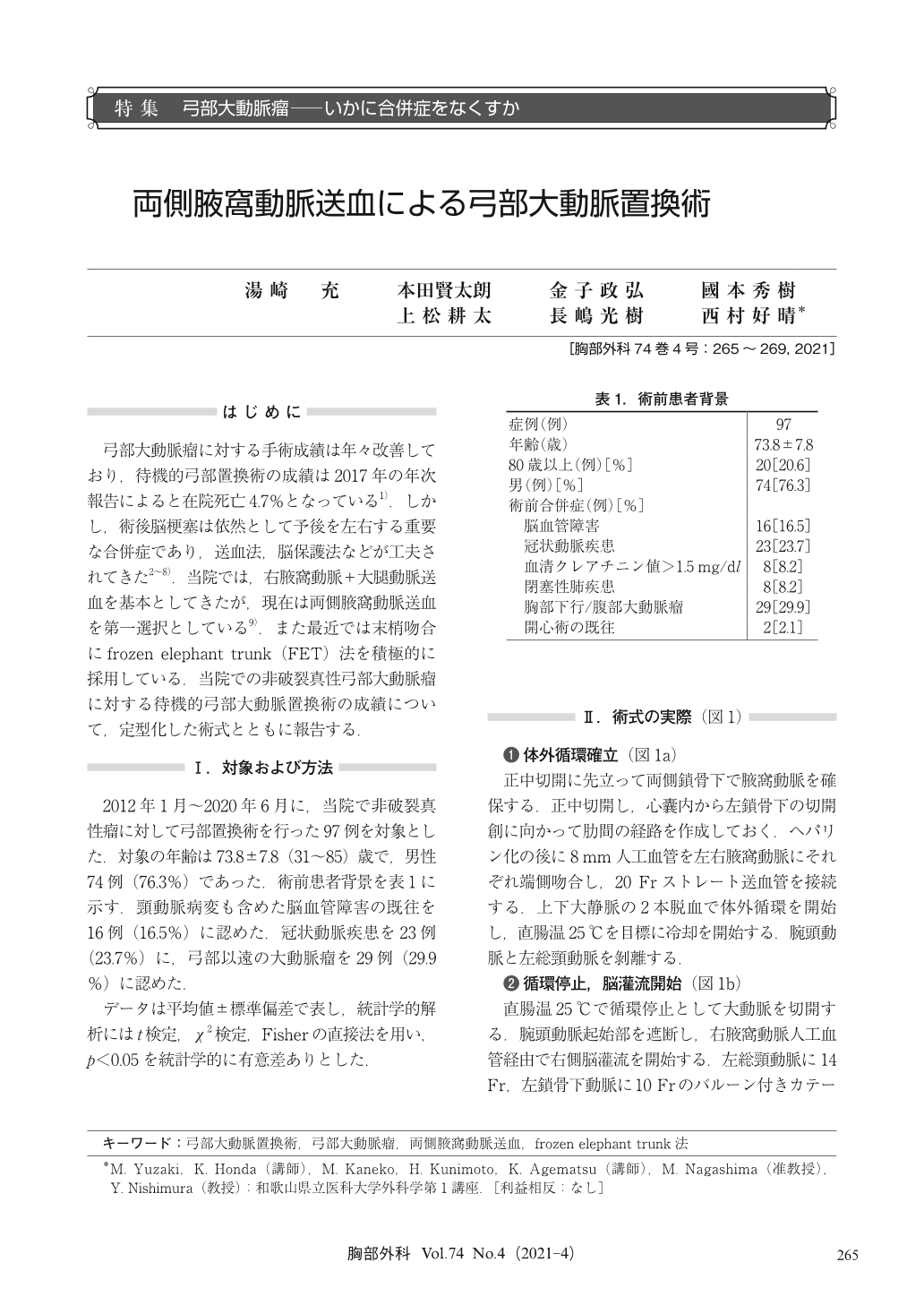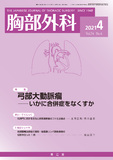Japanese
English
- 有料閲覧
- Abstract 文献概要
- 1ページ目 Look Inside
- 参考文献 Reference
弓部大動脈瘤に対する手術成績は年々改善しており,待機的弓部置換術の成績は2017年の年次報告によると在院死亡4.7%となっている1).しかし,術後脳梗塞は依然として予後を左右する重要な合併症であり,送血法,脳保護法などが工夫されてきた2~8).当院では,右腋窩動脈+大腿動脈送血を基本としてきたが,現在は両側腋窩動脈送血を第一選択としている9).また最近では末梢吻合にfrozen elephant trunk(FET)法を積極的に採用している.当院での非破裂真性弓部大動脈瘤に対する待機的弓部大動脈置換術の成績について,定型化した術式とともに報告する.
Objectives:The selection of arterial cannulation site is an important decision to avoid cerebral complication for total arch replacement (TAR). We report the surgical outcome of TAR using bilateral axillary artery perfusion in our hospital.
Methods:Between January 2012 and June 2020, 97 patients who underwent elective TAR for atherosclerotic aneurysms were enrolled in this study. Among them, bilateral axillary artery perfusion was used for 81 patients, and frozen elephant trunk (FET) procedure were used for 34 patients. In the case of FET procedure, translocated TAR was performed with distal anastomosis between the left common carotid artery and the left subclavian artery. The left subclavian artery was reconstructed by rerouting the graft used for the left axillary artery perfusion.
Results:There were no perioperative cerebral infarction and no hospital deaths. The mean operation time was 420 minutes. Compared to the conventional elephant trunk method, the FET method significantly reduced the operation time to 381 minutes.
Conclusions:Bilateral axillary artery perfusion could contribute to reduce the cerebral infarction in TAR and facilitate the FET procedure.

© Nankodo Co., Ltd., 2021


